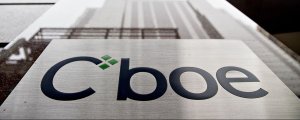Geo-expansion in the Forex world – What are a broker’s needs?
By Kobi Gur, CEO, Leverate Business that doesn’t grow in its topline, simply dies. Every company knows that. One of the main vehicles to grow the top line is via expansion, segmental or geographical. In this article we are going to look at geographical expansion. Many daily business decisions are based on gut feeling, […]

By Kobi Gur, CEO, Leverate
Business that doesn’t grow in its topline, simply dies. Every company knows that. One of the main vehicles to grow the top line is via expansion, segmental or geographical. In this article we are going to look at geographical expansion.
Many daily business decisions are based on gut feeling, but when it comes to expanding geographically, I highly recommend doing it based on research, facts and as part of the overall strategy of your company.
The retail forex world is basically split into two parts: regulated jurisdictions and un-regulated. It is expected that as part of the industry evolution the share of the regulated jurisdictions and its level of enforcement will rise. As such any geographical strategic decision must take into account this parameter.
But this is not the only one.
Part of Leverate’s growth strategy is to expand geographically and for that, Leverate engaged with McKinsey and Co., which is the leading consulting firm in the world. Together we developed our strategy to investigate to which places we want to go. We found a few parameters that help us make the decision in an analytical educated way.
These parameters are based on public, close to the surface information and relevant data which anyone who invests a small amount of effort can find.
The main parameters are:
- Macro economy – for example GDP and growth, local savings rate, equity market share
- Local forex retail market – like trading volume or forex share of pocket
- Local brokers – PLB/IB vs institutional share of market
- Regulation – as mentioned above this is a critical factor
Based on these parameters we screen out different countries or regions that do not meet our criteria for growth.
Yet, this is not enough since even after this screening, we are still left with more than a few options on the table and unless your company has very deep pockets and can divide its focus into so many initiatives, at the end of the day, the company needs to choose 1-2 places to expand to.
This is when a second stage of screening is required. At this stage the level of investigation and search for data is more difficult and requires significantly more effort and money. Yet, this stage is critical in order to crystalize the list. The main parameters at this stage are:
- Traders preference – which instruments are traded, relevant dominant systems, cultural bias
- Broker’s needs – A Book vs B Book, local marketing techniques
- Competitive presence – tech providers, type of current offering, local pricing
So after this two-step screening process, there are 1-2 options on the table in which the company can now invest and focus. Now it’s time to move to the more practical level in which the setting of the Go-To-Market plan, business plan as well as the organizational build up needs to be set.
Leverate chose last year to expand its business in Asia-Pacific region. The way it was built, evolved and now booming is an evidence that right work brings great results. Now we are moving into Western Europe with a new office in Berlin but with a different model of operations, one that fits to the analysis we did. This is not the last expansion we are planning and we believe that such activities among many others in our strategy will contribute to the growth that is so essential to any business.









